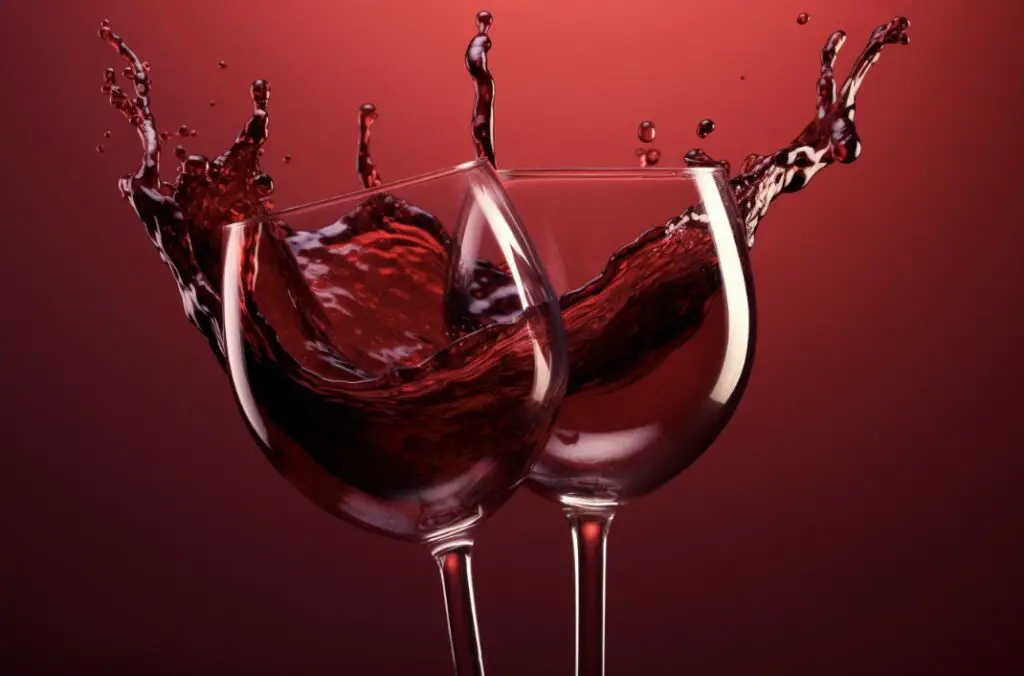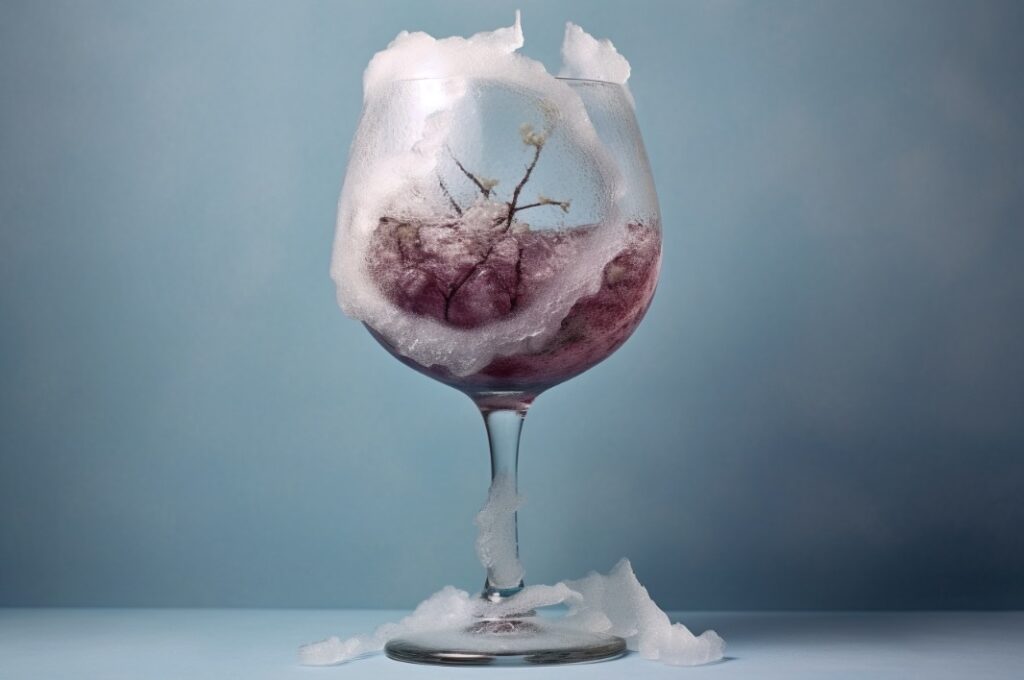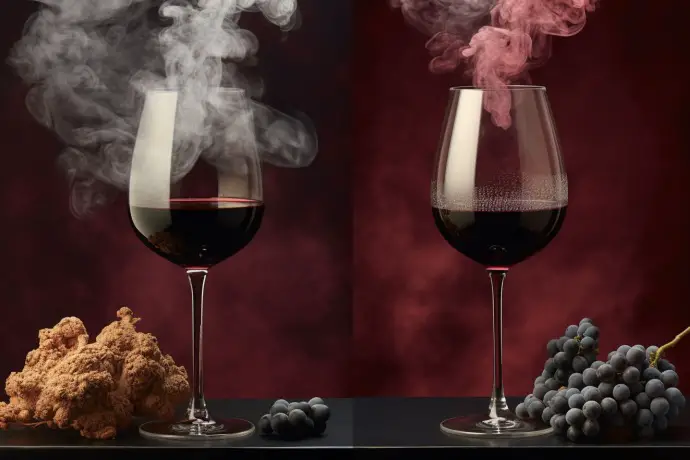There’s something captivating about the rich, velvety texture and complex flavors of a good glass of red wine. From its bold fruity notes to its deep, earthy undertones, red wine has been celebrated for centuries as a beloved beverage enjoyed by wine enthusiasts worldwide.
However, for some, the bitter taste that often accompanies red wine can be off-putting and overshadow the other delightful aspects of the drink.
If you find yourself cringing at the bitter taste of red wine, fear not! In this blog post, we will explore several techniques and strategies that can help you transform that bitter sip into a more pleasurable experience.
Whether you’re a wine novice or a seasoned connoisseur, these tips will guide you towards unlocking the hidden flavors and nuances that red wine has to offer.
From simple tricks like decanting and aerating to more advanced methods like food pairing and temperature control, we’ll explore a range of techniques to help mitigate the bitterness and enhance your overall wine-drinking experience. With a little experimentation and an open mind, you’ll discover how to make red wine a truly enjoyable sensory experience, free from overwhelming bitterness.
So, let’s embark on this flavorful journey together and uncover the secrets to making red wine taste less bitter!
Why Does Red Wine Taste Bad To Some?
There are several characteristics that can make red wine taste bad to certain individuals.
Taste preferences can vary greatly from person to person, so what one person perceives as bad might be enjoyable to someone else. However, here are some common characteristics that some people may find unpleasant in red wine:
- Bitterness: Excessive bitterness in red wine can be off-putting to some individuals. This bitterness can arise from the grape skins, seeds, or stems during the winemaking process or from over-extraction of tannins.
- Astringency: Astringency is the drying, puckering sensation in the mouth caused by tannins found in red wine. While moderate levels of tannins can contribute to the structure and complexity of the wine, excessive astringency can make the wine taste harsh or overly stringent.
- High acidity: Acidity is a vital component of wine and adds brightness and liveliness to the flavor. However, if the acidity is too high, it can result in a sharp, sour, or tart taste, which may not appeal to everyone’s palate.
- Off-flavors: Certain faults can occur during winemaking that negatively impact the taste of red wine. Examples include cork taint (a musty, moldy aroma caused by a contaminated cork), oxidation (resulting in a flat, stale taste), or microbial spoilage (leading to off-putting aromas or flavors).
- Alcohol: Higher alcohol levels in red wine can contribute to a warming sensation in the mouth and throat. Some individuals may find this sensation unpleasant, particularly if the alcohol is not well-integrated with the other components of the wine.
- Personal preference: Ultimately, taste is subjective, and personal preference plays a significant role in determining whether someone enjoys a particular wine or finds it unpleasant. What one person considers bad, another may find delightful. It’s important to remember that individual tastes can vary widely.
It’s worth noting that many of these characteristics can also be found in well-made red wines and are considered desirable by certain wine enthusiasts. Preferences for wine flavors can be influenced by exposure, education, and individual experiences.
How To Make Red Wine Taste Better?
Yes, there are several ways to enhance the taste of red wine. Here are a few tips:
1. Master Decanting: Pouring the wine into a decanter and allowing it to breathe for some time can help soften harsh tannins and improve the overall flavor.
2.Get The Serving Temperature Right: Serving red wine at the appropriate temperature can greatly impact its taste. Generally, lighter reds are served slightly chilled (around 55°F), while fuller-bodied reds are served at room temperature (around 60-65°F).
3. Proper glassware: Using the right wine glass can enhance the aromas and flavors. Choose a glass with a wide bowl and narrow rim to allow the wine to breathe and concentrate the aromas.
4. Pairing with food: Pairing red wine with complementary foods can elevate the taste. Experiment with different combinations to find the perfect match.
5. Allowing it to age: Some red wines benefit from aging, as it can mellow out the flavors and add complexity. However, not all wines are meant for long-term aging, so it’s important to know the aging potential of the wine you have.
Remember, personal preferences vary, so feel free to explore and discover what suits your taste buds best.
Decanting: A Time-Tested Method
The Art of Decanting
Decanting is a traditional method of allowing the wine to breathe, which helps to soften tannins and reduce bitterness. It involves pouring the wine into a separate container, usually a glass decanter, and letting it sit for a certain period before serving.
How Long to Decant
The length of time you should let the wine sit in the decanter depends on the wine’s age and the level of tannins. For younger red wines with higher tannin levels, decanting for 1-2 hours is recommended. For older wines, 30 minutes to an hour should suffice.
Aeration: Speeding Up the Breathing Process
Using an Aerator
Using an aerator is another method to reduce bitterness in red wine. A wine aerator is a device that mixes air into the wine as you pour it, similar to decanting. This process helps soften the tannins and improve the overall taste.
Swirling the Wine
Simply swirling your wine in the glass can also help aerate it and reduce bitterness.

This technique exposes the wine to more air, allowing the tannins to soften and the flavors to open up.
Temperature: Serving Red Wine at the Right Temperature
Ideal Serving Temperature
Serving red wine at the proper temperature can significantly impact its taste and reduce bitterness. The ideal serving temperature for red wine is between 60-65°F (15-18°C). When served too warm, the alcohol and tannins become more pronounced, leading to an unpleasant taste.
Chilling Red Wine
Chilling your red wine for a short period before serving can help mellow the bitterness and bring out the fruit flavors. Place the bottle in the refrigerator for 30-45 minutes before serving to achieve the perfect temperature.

Food Pairings: Complementing Red Wine with the Right Foods
Protein and Fat
Pairing red wine with foods rich in protein and fat can help counteract the tannins and reduce bitterness. The proteins and fats in the food help break down the tannins, making the wine taste smoother and more enjoyable. Try pairing your red wine with dishes like steak, grilled meats, or cheeses.

Spices and Flavors
Bold flavors and spices can also help balance the bitterness in red wine. Dishes with garlic, rosemary, and thyme work well with red wines, as they can hold their own against the strong tannin flavors.
Choosing the Right Glassware
Importance of Glass Shape
The shape of the wine glass can impact the wine’s taste. Glasses designed specifically for red wine, such as Bordeaux or Burgundy glasses, have larger bowls and wider openings. This design allows more air to interact with the wine, helping to soften the tannins and reduce bitterness.

Adjusting the Wine Itself
Although I am not much for admitting it, I sometimes add acid or sweeteners to my wine in order to test the effect on its taste and to make it taste less dry e.g. when served with sweeter dishes.
Adding a Sweetener
In some cases, if the bitterness is too strong, you can consider adding a small amount of sweetener to the wine.
Sweetness can help balance out the bitterness and make the wine more palatable. However, use this method sparingly and with caution, as it can alter the wine’s natural flavor profile.
Consider trying other types of wine or cider!
When it comes to wine preferences, individuals have varying tastes and preferences. While red wine is often associated with bolder flavors and higher tannin content, there are alternative options for those who prefer a lighter and less bitter experience. White wine, rosé wine, and cider can offer delightful alternatives with their lower tannin content and unique flavor profiles.
White Wines
White wines are typically made from green or yellow grape varieties and are fermented without the grape skins. This results in a lighter-bodied wine with a crisper taste profile. Due to their lower tannin levels, white wines tend to be less bitter than their red counterparts.

They often exhibit fruity and floral aromas, making them refreshing and enjoyable for those who prefer a lighter and more delicate wine experience. Varieties such as Sauvignon Blanc, Chardonnay, and Riesling offer diverse flavors, ranging from citrusy and zesty to creamy and buttery.
Rosé Wine
Rosé wines, also known as blush wines, are made from red grape varieties but undergo a shorter period of skin contact during fermentation. This limited contact imparts a lighter color and milder tannins to the wine.

Rosés can range from dry to slightly sweet, and their flavor profiles can vary from crisp and fruity to more robust and herbaceous. With their vibrant hues and versatile character, rosé wines can be an excellent choice for those seeking a refreshing and less tannic alternative to red wine.
Cider
For those looking for an even more unique and different experience, cider can be a fantastic option. Cider is made from fermented apple juice, and depending on the style, it can range from dry to sweet.

Ciders often have a crisp and refreshing taste profile, with flavors that can include apple, pear, and other fruit notes. Cider’s lower tannin content compared to red wine makes it an appealing choice for individuals who find red wine too bitter or astringent.
Exploring white wine, rosé wine, and cider can provide a diverse range of flavors and aromas that cater to different preferences. Whether you’re savoring a glass of chilled Sauvignon Blanc on a warm summer day, enjoying a lively and fruit-forward rosé with friends, or indulging in the crisp and refreshing taste of a cider, these alternatives offer a delightful experience for those seeking a lighter and less tannic option than red wine.
Conclusion
Making red wine taste less bitter is achievable through various techniques, such as decanting, serving at the right temperature, pairing with the right foods, aeration, and using the proper glassware.
By following these tips, you can enhance the flavor of your red wine and make it more enjoyable to drink.
But also consider the myriad of other fermented fruit juices out there!
10 Facts About Reducing Bitterness in Red Wine
1. Bitterness in red wine is primarily due to tannins.
2. Decanting helps to soften tannins and reduce bitterness.
3. The ideal serving temperature for red wine is 60-65°F (15-18°C).
4. Chilling red wine before serving can help mellow the bitterness.
5. Pairing red wine with foods rich in protein and fat can counteract the tannins.
6. Bold flavors and spices can help balance the bitterness in red wine.
7. A wine aerator can mix air into the wine to soften the tannins.
8. Swirling your wine in the glass can help aerate it and reduce bitterness.
9. Using Bordeaux or Burgundy glasses can enhance the flavor of red wine.
10. Adding a sweetener can help balance out the bitterness, but use sparingly.
FAQs
What is the best way to enjoy red wine?
The best way to enjoy red wine is to start by selecting a wine that suits your taste preferences. Allow the wine to breathe by opening the bottle at least 30 minutes before serving. Pour the wine into a glass, filling it about one-third full to allow for swirling. Take a moment to observe the color and clarity of the wine. Next, gently swirl the glass to release the aromas. Take a sniff to appreciate the wine’s bouquet. Finally, take a sip, allowing the wine to coat your palate and savor the flavors. Remember to pair it with food if desired, as it can enhance the overall experience. Enjoy responsibly and in moderation.
How do you drink red wine if you don’t like it?
If you don’t enjoy the taste of red wine, there are a few things you can try to make it more palatable. Firstly, consider chilling the wine slightly as cooler temperatures can reduce the perception of tannins and acidity. Additionally, you can try pairing the wine with foods that complement its flavors, such as cheese, dark chocolate, or red meat. If these methods still don’t appeal to you, it’s perfectly acceptable to explore other types of beverages that align with your personal taste preferences.
Can you add anything to red wine to make it taste better?
Yes, you can enhance the taste of red wine by adding certain ingredients. For example, you can aerate the wine by decanting it or using a wine aerator, which can help soften the tannins and improve the flavor. Additionally, you can experiment with adding a small amount of fruit juice, such as cranberry or pomegranate, to enhance the fruity notes. However, it’s important to remember that wine appreciation is subjective, and what tastes better to one person may not be the same for another.
What can you add to red wine to make it taste better?
One common method to enhance the flavor of red wine is to aerate it by allowing it to breathe. This can be done by decanting the wine into a carafe or simply swirling it in the glass. Additionally, pairing the wine with complementary foods can help to elevate the experience. Experimenting with different food pairings and serving temperatures can bring out the best flavors in the wine. It’s important to note that adding ingredients or substances to red wine is generally not recommended, as it can alter the intended taste and quality of the wine.
How do I start enjoying red wine?
To start enjoying red wine, it’s important to explore different varieties and find one that suits your taste preferences. Begin with lighter reds like Pinot Noir or Beaujolais, which have more delicate flavors. Gradually move on to medium-bodied options such as Merlot or Sangiovese, and then try fuller-bodied reds like Cabernet Sauvignon or Syrah. Experiment with different food pairings to enhance your experience, as certain dishes can complement the flavors of red wine. Additionally, allow the wine to breathe for a while before drinking, as it can enhance the aromas and flavors. Remember, wine appreciation is subjective, so take your time, experiment, and find what you enjoy most.




